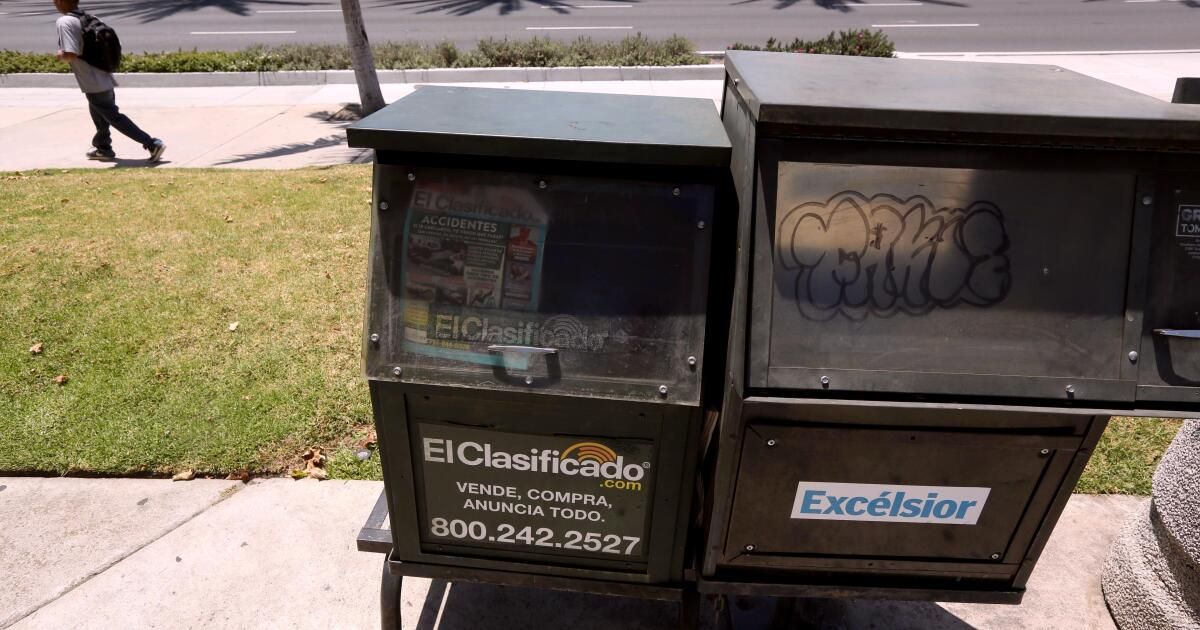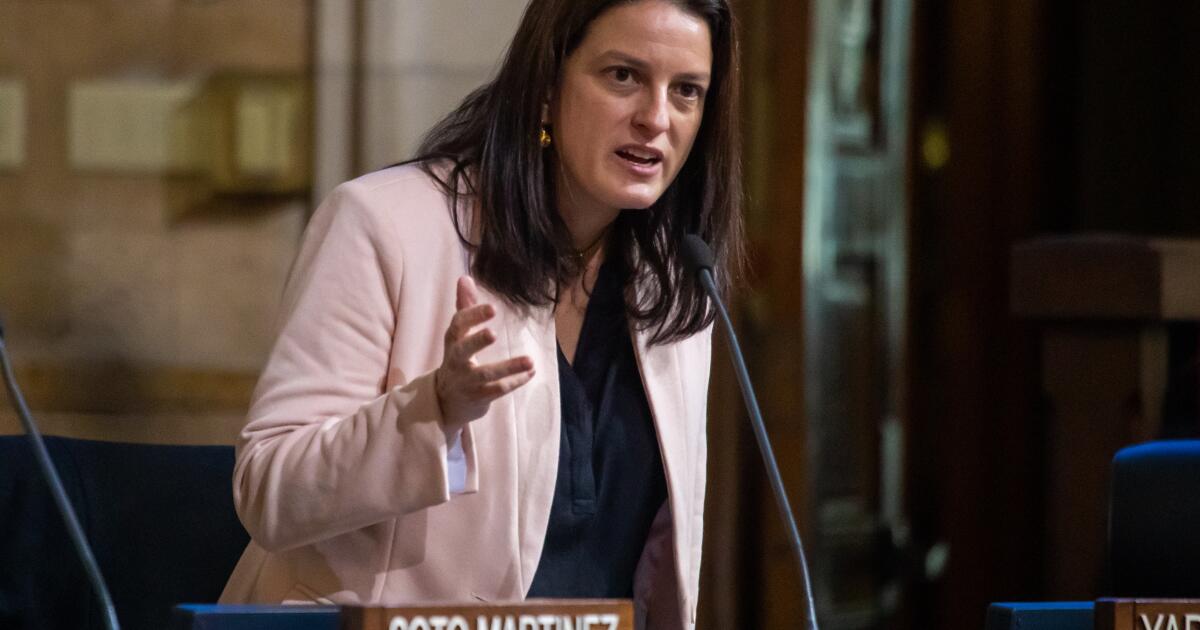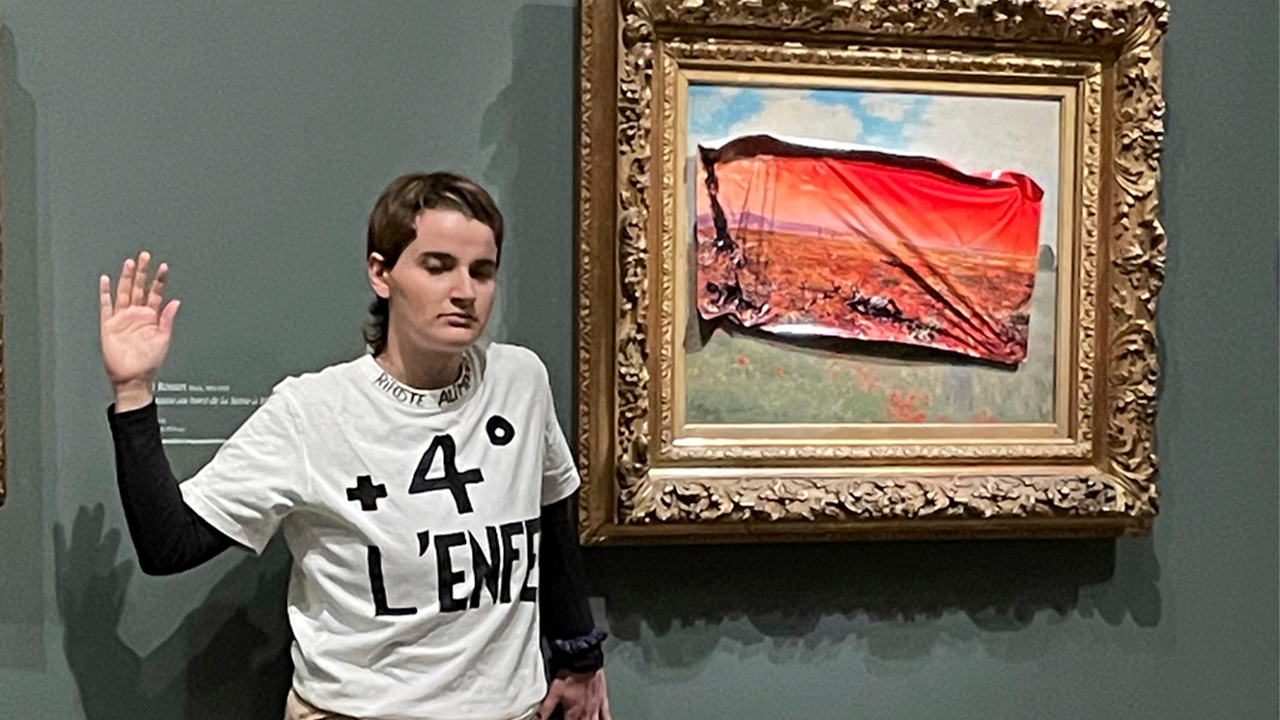As local news struggles to survive, a collective of Los Angeles media executives and philanthropists on Tuesday launched an ambitious nonprofit group to bolster Los Angeles County’s local news ecosystem, support small, independent media outlets and build public trust in the media.
The new organization, the Los Angeles Local News Initiative, has raised nearly $15 million to provide disadvantaged county residents with free access to local, regional and state news that will help them become more involved in their communities and hold officials accountable.
The initiative, funded by organizations including the American Journalism Project, the Eli and Edythe Broad Foundation and the Spiegel Family Fund, will support a network of community-first media outlets to report across digital, print and radio platforms for the 10 million residents of Los Angeles County. These hyperlocal outlets will work in partnership with CalMatters, a nonprofit newsroom focused on explaining California politics and policy, and LAist, part of the Southern California Public Radio group, to deliver enhanced regional accountability journalism that fills reporting gaps.
“Los Angeles County is too complicated and diverse a place for any one outlet to serve all of the local news needs of all residents,” said Michael Ouimette, chief investment officer of the American Journalism Project.
Los Angeles County, like many parts of the country, has seen reductions in the number of local news organizations over the past two decades, including the closure of newspapers. Some questionable local news sites have emerged in that void.
California has seen successes and challenges for hyperlocal news startups. Look Out Santa Cruz was awarded the Pulitzer Prize for breaking news reporting earlier this year. But the Long Beach Post, once hailed as a model in the industry, went through a nasty round of layoffs and labor unrest when some of its funding dried up.
The new initiative is one of many investment efforts by nonprofits and foundations to stem losses in journalism and counter a rising tide of online misinformation.
The idea for the nonprofit, which organizers say will create more than three dozen journalism jobs over the next three years, came from Los Angeles residents in historically underserved areas.
In 2022, the American Journalism Project partnered with local civic leaders to interview 845 Los Angeles County residents in hard-to-reach communities spanning 244 ZIP codes from Newbury Park to South Central Los Angeles.
They found that many county residents feel local news is not meeting their needs. They want access to more free, high-quality, hyperlocal news that gives them information to stay safe and meet their basic needs, that holds government accountable, and that tells the full stories of the region without sensationalism.
At a time when more than 200 U.S. counties have no news outlets, Los Angeles County has 104 — more than any other county except Cook County in Illinois, where Chicago is located, according to a 2023 report by Northwestern University’s Medill Local News Initiative. But its population is larger than many states, and most news outlets here are too overstretched to cover many town hall and school board meetings.
“When people think of news deserts, they think of rural America or communities that don’t have access to the internet, but we have those same types of deserts across the region,” said Monica Lozano, board chair of the new Los Angeles Local News Initiative and former editor, publisher and CEO of La Opinión. “It was that dearth of reliable, verifiable, nonpartisan information that allows people to make informed decisions about their neighborhoods that served as the genesis of what has now become the LA Local News initiative.”
The group identified a model that connects with residents of an underserved community and conducts service journalism that they want to replicate across the region: Boyle Heights Beat.
Boyle Heights Beat, a nonprofit bilingual newsroom that began training high school journalists in the historic Latino community of Boyle Heights in 2010 to report on the communities in which they live, has expanded into a digital news outlet covering East Los Angeles with nine staff members, three of whom are full-time reporters, and a network of 30 young reporters.
“Boyle Heights Beat has earned the trust, respect, credibility and relationships necessary to report on a local community from people who live in that community and experience it every day,” Lozano said.
The outlet holds quarterly community meetings to reach out to residents and hear their concerns. It receives input from local students and their parents. Its reporters, editors and coordinators hand-deliver 30,000 quarterly print editions to local libraries, restaurants and community centers.
This summer, Boyle Heights Beat reported on a program that was distributing free air purifiers to residents, a story that was widely shared in a community at the crossroads of five highways whose residents have high levels of cardiovascular problems.
“Community-focused journalism is in our DNA and we’re going to go into other communities and really explore what those communities need, using Boyle Heights Beats as a model,” said Kris Kelley, executive editor of Beat.
It's not yet clear how far the Boyle Heights Beat model can be extended. There are 88 independent municipalities in Los Angeles County, plus dozens of neighborhoods within the city of Los Angeles and unincorporated communities in the county. Some have local media outlets, but many do not.
The Los Angeles Local News Initiative is just the latest in a national movement of philanthropic and local leaders working to support and revitalize local news in the digital age. As big tech companies run ads alongside news content, eroding the financial foundation of journalism, California local news is in marked decline. A report last year found that California has lost 68% of its journalists since 2005.
Press Forward, a national coalition of more than 20 major donors led by the MacArthur and Knight foundations, unveiled a plan last year to distribute $500 million to news organizations across the country over five years. Neighborhood-focused concepts are being implemented across the country, from Block Club Chicago to Canopy Atlanta.
The initiative has already forged partnerships with nearly 20 media outlets and universities across Los Angeles County. Next year, the group plans to launch new publications in other communities, but few details were released.
“We believe this is an opportunity to ensure that historically underserved communities are not further disenfranchised because their residents lack access to reliable, objective, nonpartisan news,” said Gerun Riley, president of the Broad Foundation.












